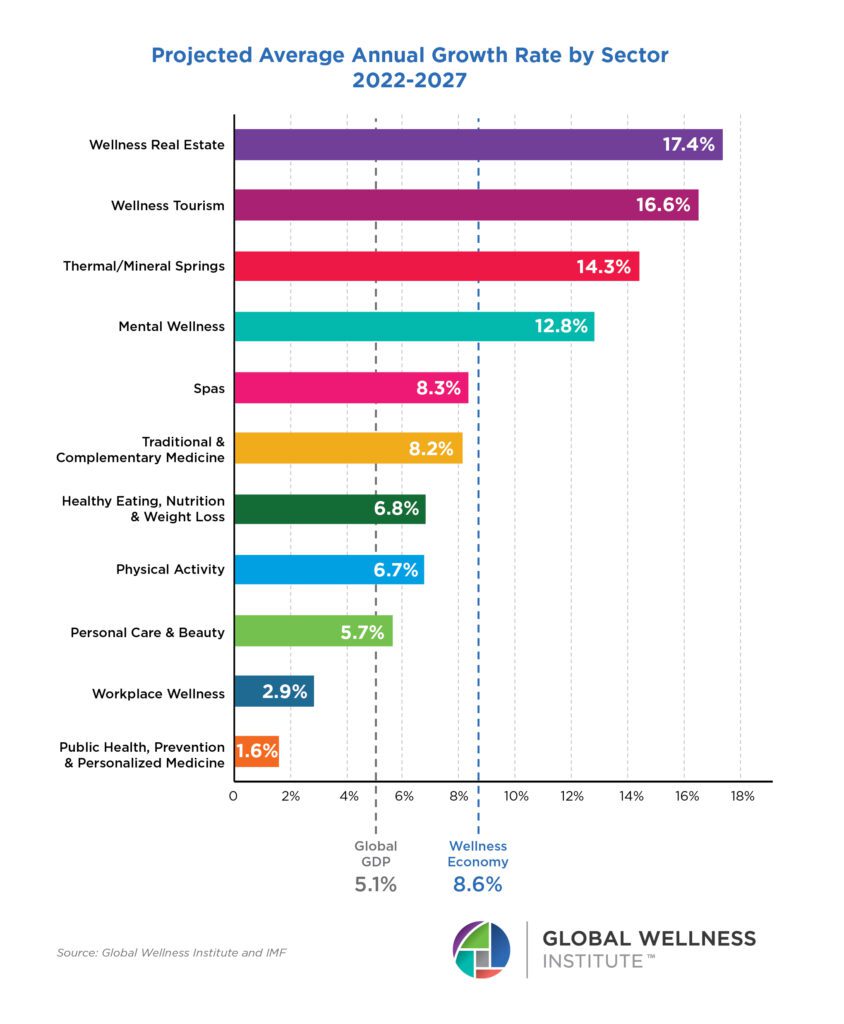That’s according to latest research put out by the Global Wellness Institute, in its annual state of the global wellness sector, of which tourism is one part.
From the report: The wellness tourism market plummeted from 2019 to 2020 ($720 billion to $351 billion), but has seen 36% annual spending growth, and 30% annual wellness trip growth, from 2020 to 2022—significantly higher than growth rates for overall tourism trips and expenditures, at 23.8% and 28.4%.
Wellness travelers made 819.4 million international and domestic wellness trips in 2022, a major increase over 2020 (483 million) and 2021 (608 million) levels. Wellness trips accounted for 7.8% of all tourism trips but represented 18.7% of all tourism expenditures in 2022 (so almost 1 in 5 total “travel dollars”). The wellness tourism market is forecast to more than double from 2022 to 2027, with dramatic spending jumps from 2022 ($651 billion) to 2023 ($868 billion) to 2024 ($1 trillion), as the market continues its supercharged recovery. After that, it’s likely to taper off to a still strong, but less overheated growth curve.
There are some wrinkles to the recovery, as the report points out that the wellness tourism, spa and thermal/mineral springs markets were the hardest hit by the pandemic, given widespread travel restrictions and business shutdowns.
All three grew rapidly in 2021-2022, but haven’t quite yet recovered to their pre-pandemic levels. A key factor is the ongoing recovery of the global tourism market: as of 2022, international trips were still at 62% of their pre-pandemic level, and domestic trips were at 73% (Euromonitor data). The Asia-Pacific region has especially lagged in recovery, due to prolonged pandemic restrictions and border closures in China, the dearth of Chinese tourists throughout the region, weakening economic conditions in China and Japan, currency depreciation, and other factors.


